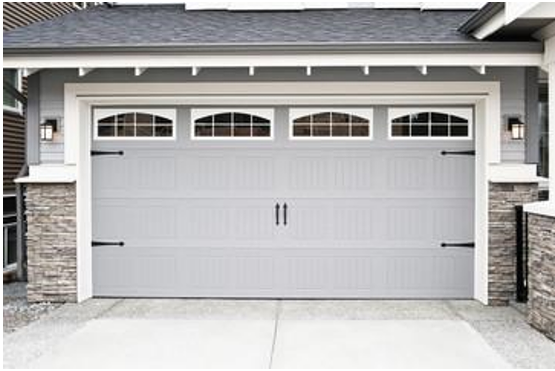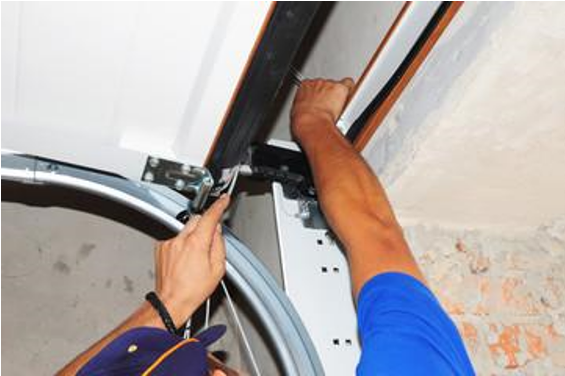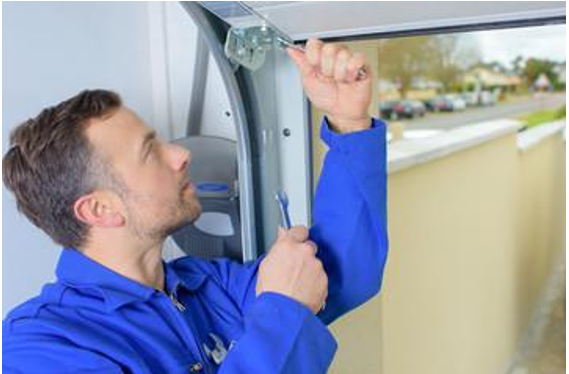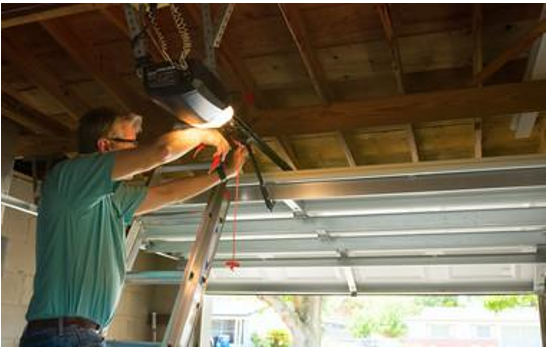Winter is perhaps the one season that comes to mind when we think of garage door wear and tear. However, other seasons are equally responsible for the gradual degradation of garage door performance.
Therefore, it’s imperative to keep all seasons in mind while drafting a garage door care and maintenance plan. This article looks at the five tips on how to protect your garage door from wear and tear.

Photo Credit: AdobeStock.com
1. Check Your Garage Door Opener
This is one of the most recommended garage door safety tips for homeowners. It’s also one of the easiest to execute.
Many experts advise checking your garage door opener at the end of summer. It allows you to uncover any faults that may get more problematic as other seasons, particularly winter, roll in. The last thing you want is to deal with a sticking garage door in the dead of winter.
Key areas to inspect here are the remote and button switch. Establish that these components are working as efficiently as they should.
Next, ensure that the low-voltage electrical line is safe and secure. The last bit is to ascertain that the door closes tightly without leaving open gaps to protect the garage from winter’s chilly weather and vermin invasions. You may need to calibrate the opener.
Adjusting a garage door opener is an exciting DIY project for many homeowners. But you can also enlist professional help if need be.
2. Lubricate As Often As Required
All garage doors make some natural sound when opening and closing. However, excess squeaks may indicate that certain parts need to be lubricated.
Rollers are the most common garage door components that often require lubricating.
Many homeowners prefer to lubricate their garage door rollers twice a year. However, the idea is to oil these parts as regularly as possible. Remember that your garage door rollers are already in a deplorable condition by the time they begin to make squeaking sounds.
But lubricating rollers doesn’t just reduce the noise. It also ensures their smooth movement. Rollers that go significantly longer without oiling may become overly stiff. As such, the pressure involved in opening or closing the garage door may exert undue stress on the rollers and hinges, causing them to go off track.
Lubrication is a preventive measure that keeps your garage door rollers and the entire system functioning optimally. It minimizes costly repairs and replacements.

Photo Credit: AdobeStock.com
3. Examine Any Cracks on the Garage Door and Floor
Cracks are bound to develop in your garage door on a long enough timeline. These crevices are especially common in older homes and poorly maintained garage doors. And they’ll occur regardless of whether the floor is made from concrete, wood, or metal.
What makes crack inspection a critical garage door repair tip is that it can improve the structural integrity of your entire house and not just the garage. It’s a smart strategy to add to the property’s curb appeal.
The first step in examining your garage floor and door for cracks is to empty the space by removing all tools and moving vehicles. Next, check for any cracks that are at least one-eighth of an inch or wider.
The best way to measure the width is by using a pair of stacked quarters. Two quarters are about 1/8 inches thick. If they can fit into the crack, then you know the damage is significant enough.
Another cracking aspect is where one side of the crack ledge is considerably higher than the other. Slide your two quarters across the cracked floor to see if they get caught in the crevices.

Photo Credit: AdobeStock.com
4. Look Out For Vermin
Cracks in the garage door and floor may not only impact your property’s structural integrity. It might also offer a passageway for vermin, such as mice and rats.
Pest infestation in garages is typically a winter problem. As temperatures plummet to sub-zero degrees, these animals will want to seek out warmer shelters. And their search for warmth may have them wind up in your garage.
Other smaller animals, such as earthworms and insects, may also be washed into your garage during storms or floods. This is usually a problem where the garage door bottom seal breaks apart.
That explains why routine garage door inspection must include checking out for vermin.
Animal droppings are a tell-tale sign that your garage may be hosting unwanted guests. The most viable solution here would be to replace the garage door’s bottom seal.
5. Insulate Whenever Necessary
We cannot wind up this list of garage door maintenance tips without mentioning insulation. Insulating your garage door serves numerous purposes.
First, it prevents extreme cold or warm temperatures from seeping into the garage (and, by extension, to the rest of your home) through any crevices on the door.
Proper insulation also helps keep your energy bills down. That’s because you won’t need to run your HVAC equipment longer to achieve the desired garage temperature.
Moreover, insulation may dampen outdoor sounds, making your garage and home more comfortable.
The process of insulating the garage door usually begins by cleaning the door using household cleaners.
You’ll then need to purchase insulation material approximately the size of the interior door panels.
The last step entails cutting the insulation into the right sizes and pressing it onto the cracks.

Photo Credit: AdobeStock.com
Summary
Protecting your garage door from seasonal wear and tear should be ongoing. Remember that while you can conduct most garage door inspections yourself, you’ll need a professional garage door technician for repairs and replacements.









